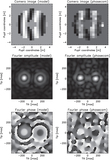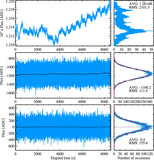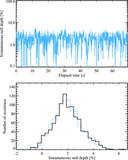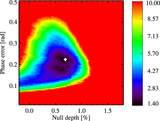Image Details
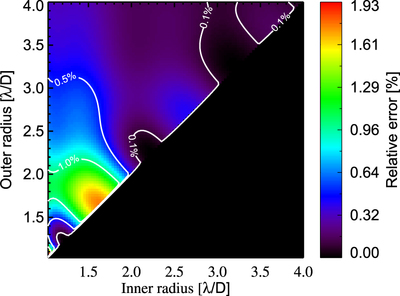
Caption: Figure 18.
Relative error on the flux estimate as function of the inner and outer radii of the background annulus used for aperture photometry. The resulting error on the source null can simply be obtained by multiplying these values by the null depth. For instance, for a thin annulus located at ∼1.7λ/D (i.e., the position of the first Airy ring) and a typical null depth of 1%, the error on the source null amounts to ∼0.02%. In practice, the position of the background annulus is chosen so that the resulting error on the source null is smaller than 0.01%.
Copyright and Terms & Conditions
© 2016. The American Astronomical Society. All rights reserved.





